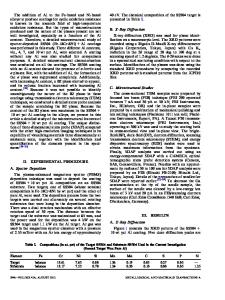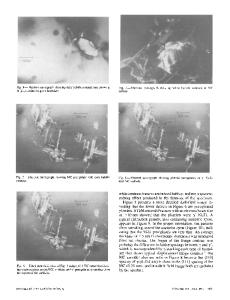Predominant Solidification Modes of 316 Austenitic Stainless Steel Coatings Deposited by Laser Cladding on 304 Stainless
- PDF / 4,236,204 Bytes
- 12 Pages / 593.972 x 792 pts Page_size
- 53 Downloads / 367 Views
NTRODUCTION
MANY industrial sectors require the use of steel components and materials that are subjected to severe working conditions involving abrasive wear, corrosive environments, high mechanical stresses, and other factors leading to deterioration.[1] In many cases, it is often not feasible to use a single material that meets all the requirements. One technique that can be used to mitigate these problems is the application of a coating by means of a welding process, such as laser cladding, using a material that presents superior performance under the operational conditions to extend the useful life of the component that is coated. The laser cladding process, which is a technique that creates metallurgical bonding with the substrate, is increasingly used in the field of surface engineering.[2]
L.H.R. APOLINARIO, D. WALLERSTEIN, S.L. URTIGA FILHO, T.F.C. HERMENEGILDO, and T.F.A. SANTOS are with the Department of Mechanical Engineering, Universidade Federal de Pernambuco, Recife, PE 50740-550, Brazil. Contact e-mail: [email protected] M.A. MONTEALEGRE is with the Laser Applications Center, AIMEN Centro Tecnolo´gico, O Porrin˜o, Pontevedra, Spain. E.A. TORRES is with the Department of Mechanical Engineering, Universidad de Antioquia, Medellin, AN, Colombia. Manuscript submitted May 10, 2019. Article published online May 31, 2019 METALLURGICAL AND MATERIALS TRANSACTIONS A
Compared to conventional coating processes, such as electric arc weld overlay and plasma spray coating, the technique offers advantages, including the formation of layers with low porosity, minimal dilution, little distortion of the base metal, a small thermally affected zone, improved quality of the coating, and simple automation ability.[3–6] Austenitic stainless steels are often good candidates for use as coatings since they present satisfactory corrosion resistance in most types of environment, good impact properties at low temperatures, and good weldability when due care is taken. These materials are often used in applications that require corrosion resistance at high temperatures,[7–10] such as in the petrochemical and chemical industries, support structures, kitchen equipment, and medical products, among other applications. Coating by welding involves the localized application of heat, leading to metallurgical transformations that need to be studied for each material. Alterations in the properties of the material, which may not always be desirable or acceptable, can occur in the coating region. Most of these alterations depend on the reactions that occur during solidification and cooling of the weld bead, as well as on its final microstructure. Understanding these metallurgical phenomena is important in many welding applications,[11] including coatings.
VOLUME 50A, AUGUST 2019—3617
Austenitic stainless steels can have either ferrite or austenite as the primary phase, depending on the composition that results during solidification. This is influenced by the balance between the austenite promoting elements (gammagenic elements) and the ferrite
Data Loading...











